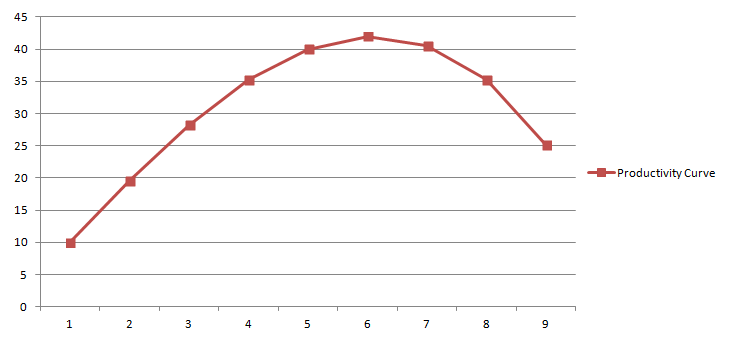Scrum Team Size – What size should they be?
There is much more involved to the sizing of the Scrum Team than selecting a set number of developers and care should be taken to ensure that the Scrum Team size is optimal for your project. There are many factors and trade-offs that must be taken into consideration when sizing the Scrum Team, including:
* Is the Scrum Team a cross-functional team with an extensive and complementary skill set where the team has sufficient skills to complete the project?
* Are the Scrum Team resources dedicated resources with no cross-team effort and can the resources focus all their attention on the project?
* Is the Scrum Team an established high performing team where they have been achieving consistently high results over an extended period of time?
Even factors such as the length of the project should be taken into consideration. Larger Scrum Teams spend longer progressing through the Tuckman Team Development Model as they spend more time forming and storming, longer norming and consequently less time performing. This is because more communication channels are required to be formed by the team and building these channels takes time.

Scrum Team Communication Overhead
As the Scrum Team size grows, the communication channels or channels of individual interactions between the team grows and the communication overhead therefore increases. This communication overhead can then be calculated by the equation:
Communication Overhead = Team Size * (Team Size – 1) / 2
So a Scrum Team size of 5 requires 10 channels of communication.
Communication Overhead = 5 * (5 – 1) / 2 = 10
Let’s consider the Scrum Team of 5 where each of the persons is labeled A to E. The team interactions are, therefore:
A – B, A-C, A – D, A – E, B – C, B – D, B – E, C – D, C – E, D – E
Expanding the Scrum Team to 7 and the number of interactions more than doubles to 21 interactions. Increasing to 9 persons and the number almost doubles again to 36 channels of interactions. As the team grows the team will either:
* Spend more time interacting – hence reducing individual productivity levels
* Maintain individual productivity levels – hence reducing interaction levels and subsequently Scrum Team performance drops
It is clear from the first bullet point that as the Scrum Team members spend more time interacting with each other, then there will naturally be less time for them to be generating value within the product.
Lets now consider the second bullet point. If the Scrum Team maintains their individual productivity levels, the level of interaction between the individuals must be reduced. As the level of interaction decreases the communication levels drop and risks increase. These risks include:
* Information is not communicated
* Project planning is not communicated
* Product change is not communicated
Scrum Team Size – The Productivity Equation
If we consider the number of interactions between individuals within a Scrum Team that interact for a fixed percentage of each day, then we can calculate the effectiveness of each team size through the equation:
Team Productivity = Total Hours Worked * ((100 – (Communication Overhead * Percentage Individual Interactive)) / 100)
Where:
Communication Overhead = Team Size * (Team Size – 1) / 2
Then:
Team Productivity = Total Hours Worked * ((100 – ((Team Size * (Team Size – 1) / 2) * Percentage Individual Interactive)) / 100)
So let’s consider a Scrum Team of 5 persons who work 10 hours a day each. These 5 persons spend 2% of each day communicating with each individual in the team then:
Team Productivity = 50 * ((100 – ((5 * (5 – 1) / 2) * 2)) / 100) = 40 hours
The Scrum Team would then spend 20% of their time communicating with the team. The productivity equation can then be applied to teams of varying sizes to create the team productivity curve:

This shows that the optimal Scrum Team size per quantity of work completed is 6 persons. Further studies on Scrum Team sizes have shown that teams of 5 to 7 persons do actually perform better than larger teams when conducting similarly sized projects. The team productivity equation shows that Scrum Teams larger than 11 persons would generate negative amounts of work which thankfully is not ‘usually’ the case. In practice, productivity does indeed reduce for teams of this size but communication between the individuals reduces such that some productivity is still observed. As the Scrum Team size grows increased numbers of errors are often observed. These errors can however occasionally result in negative productivity as the effort is used and value is reduced.
Scrum Team Size – Large or Small?
The productivity of Scrum Teams greater than 7 persons shows significant decreases in efficiency. This suggests that larger Scrum Teams are just a quicker way of spending the project budget.
Some projects, despite the reduction in the efficiency, may require larger Scrum Teams. For example, if the skill set requirements for a particular project required specific skills which could not be sourced from fewer individuals. Where Scrum Team requirements expand beyond 9 persons then it may be necessary to split into multiple teams in order to increase the team efficiency.
Productivity per individual increases with smaller Scrum Teams so why not use smaller teams? Individual productivity may increase, however overall team productivity decreases. Let’s consider the team productivity equation and chart above. As the team size increased from 1 to 6, the productivity output increased. As more team members have added then the output or the product value (assuming we are producing the right outputs) increased. Additionally, the increased team size allows for a broader skill set which may not be possible with the smaller teams.
Our Favourite Agile Books




